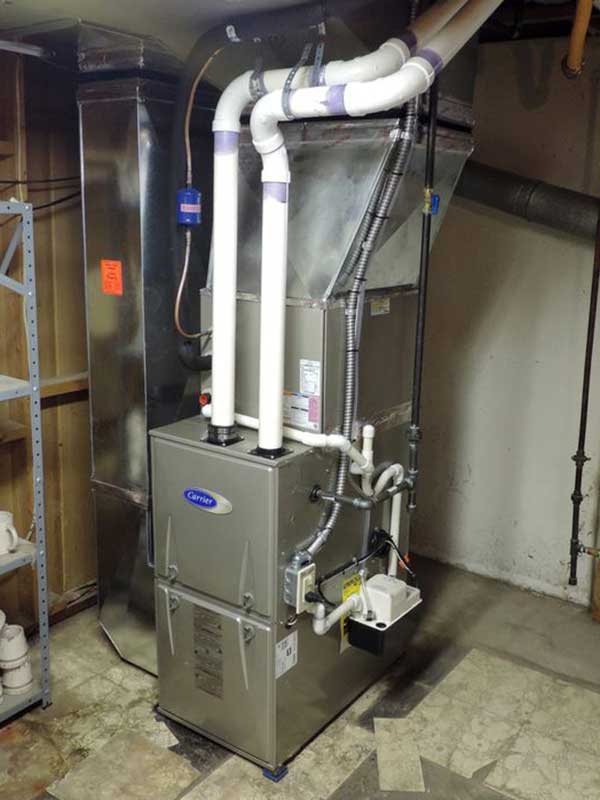Why furnace installation is essential for top-notch home heating efficiency
The Ultimate Overview to Heating System Installation for a Cozy Home
Heating system installment is a crucial element of keeping a comfy home environment, particularly throughout the cooler months. As you take into consideration these elements, the concern stays: what actions can you take to guarantee your heater serves you well for years to come?
Types of Heating Systems
When thinking about heater installment, recognizing the various sorts of furnaces available is important for making a notified choice. The main kinds of heaters consist of gas, electrical, and oil heaters, each offering distinctive benefits and factors to consider.
Gas heaters are one of the most typical option because of their effectiveness and lower operational costs. They utilize gas or propane, providing fast home heating and regular efficiency, making them perfect for colder climates.
Electric furnaces, while generally less complicated to mount and keep, have a tendency to have higher operational costs. They are often preferred in locations where gas service is unavailable or for homes with existing electrical framework.
Oil heating systems, though less common today, continue to be a feasible choice in certain areas. They melt heating oil, which can be advantageous throughout chillier months, but their dependence on oil distribution positions potential obstacles.
Furthermore, there are high-efficiency models readily available throughout these types, which can dramatically reduce energy intake and utility costs. Eventually, understanding these heater types will certainly assist homeowners pick a system that aligns with their home heating needs, spending plan, and energy choices.
Selecting the Right Dimension
Picking the appropriate size for a heating system is important to making certain optimal performance and energy efficiency. An undersized heating system will have a hard time to preserve comfy temperature levels throughout the cool months, bring about raised wear and tear, greater power costs, and possible system failing. Alternatively, an extra-large heater might cycle on and off also regularly, resulting in inefficient home heating and uneven temperature distribution within the home.

Heating system dimensions are usually gauged in British Thermal Systems (BTUs), which show the amount of power required to heat up a room. It is recommended to seek advice from with a qualified a/c professional who can execute the necessary computations and suggest a suitably sized unit. furnace repair. Purchasing the appropriate furnace size not just boosts comfort however also adds to long-lasting power financial savings and system reliability
Setup Refine Review
Once the suitable heating system dimension has been figured out, the following action entails understanding the installation process. This process normally starts with an extensive evaluation of the installment website, consisting of the existing ductwork and air flow systems. Correct preparation is important to guarantee seamless combination and ideal efficiency of the brand-new heating system.
The setup normally consists of detaching the old system, which includes securely eliminating any kind of electric links, gas lines, and ductwork connected to the previous heating system - furnace repair. When removed, the new furnace is carefully positioned and leveled, ensuring that it fulfills the manufacturer's click to read more requirements for optimum procedure
Next, the installer will connect the essential gas and electric lines, sticking to local codes and safety regulations. Following this, ductwork might require to be customized or replaced to suit the brand-new system, making sure effective airflow throughout the home.

Vital Devices and Materials
Gathering the important devices and materials is critical for a successful heater installation. Correct preparation makes sure that the installment process is effective and minimizes the potential for errors.
Trick devices called for include a drill, screwdrivers, wrenches, pliers, and a degree. A multimeter is crucial for electric links, a knockout post while a pipe cutter and adjustable wrench are essential for gas line installation. Furthermore, a measuring tape and a stud finder will help in making sure exact placement and protected attachment of the heater.
In regards to materials, you will need ductwork, insulation, and securing tape to make certain optimal airflow and energy effectiveness. It is likewise vital to have a brand-new furnace filter on hand, together with venting materials, such as PVC pipeline or steel flue, relying on the sort of heater being mounted.
Safety equipment, including gloves, goggles, and a face mask, is also crucial to safeguard against dust and debris during installation. Having all these tools and materials readily offered not just simplifies the procedure yet additionally boosts the safety and security and performance of the heating system setup.
Maintenance Tips for Durability
To guarantee the longevity of your furnace, it is essential to implement a normal upkeep timetable that deals with key components of the system. Beginning by changing or cleaning up the air filter every one to 3 months, as a clogged up filter can limit air flow and decrease performance. Furthermore, examine and clean the blower setting up to avoid dust accumulation that can prevent efficiency.
Next, examine the thermostat settings and recalibrate if essential to make sure accurate temperature level policy. Inspect the ductwork Bonuses for leakages or obstructions, as this can lead to power loss and uneven home heating. On a regular basis lube the electric motor and bearings according to the maker's recommendations to decrease deterioration.
Specialist assessments should take place yearly, where a certified specialist can analyze the heating system's total condition, look for gas leaks, and make sure that safety functions are operating properly. Consider setting up a programmable thermostat to maximize energy usage and preserve regular home temperatures. By embracing these upkeep practices, you can improve your heater's performance, extend its life expectancy, and inevitably enjoy a relaxing and comfy home environment.
Conclusion
Reliable furnace installation is important for achieving optimal home comfort and energy efficiency. Understanding different heater types and choosing the proper dimension makes certain appropriate capability.